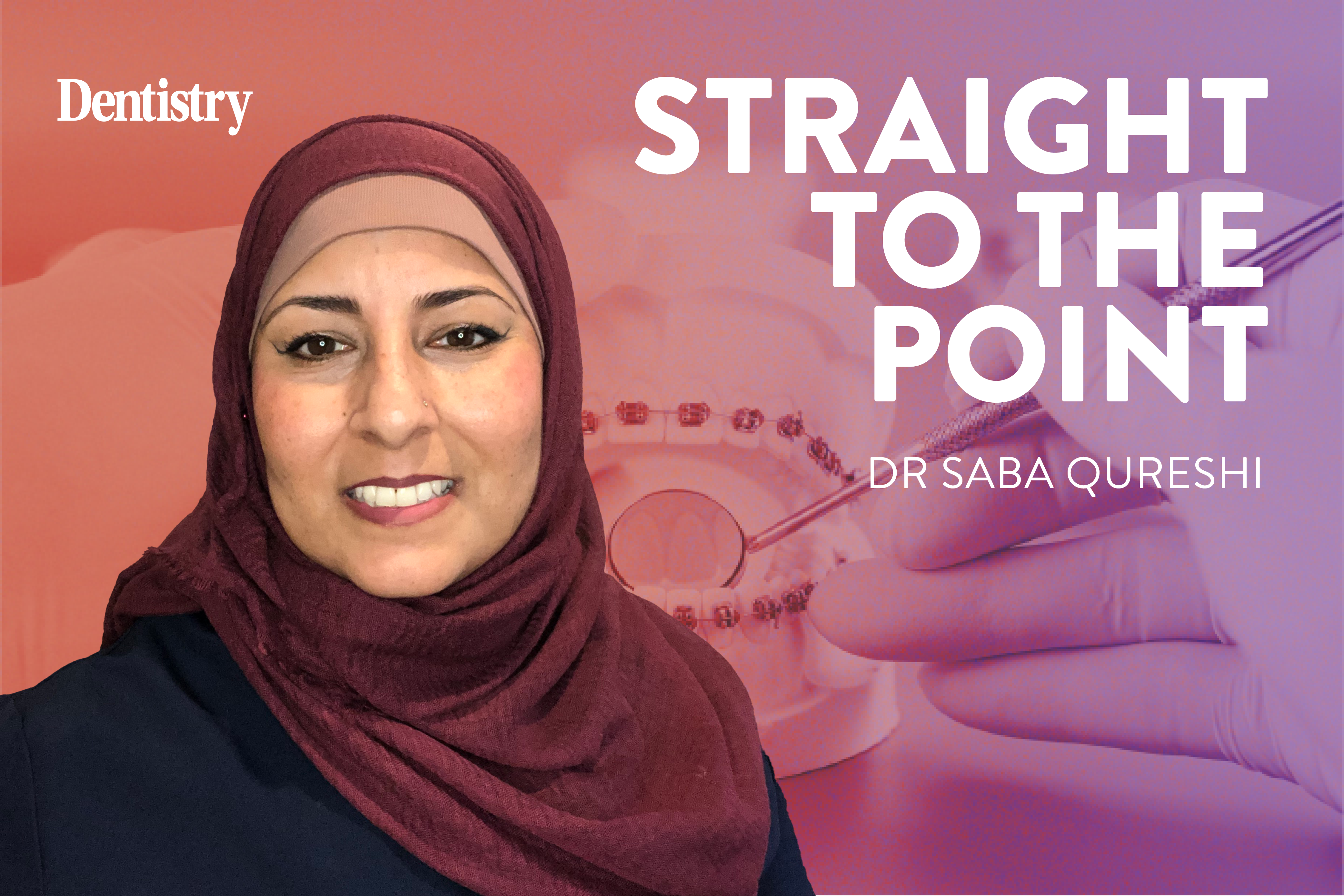
This month, Saba Qureshi discusses how orthodontic treatment can differ for adult patients and everything they need to know prior to starting treatment.
Is age more than just a number when it comes to orthodontic patients?
While some may still consider braces are for kids, adult patients are increasingly embracing orthodontics in order to gain confidence in their smiles and to facilitate cosmetic dental work.
But is there a difference between treatment duration in younger and older patients? Let’s find out.
Tooth movement
Orthodontic appliances are used to apply forces to teeth, which in turn produce stresses on the periodontal ligament, causing bone remodelling, via means of an aseptic inflammatory response. This results in tooth movement.
When light forces are applied, frontal resorption occurs in the direction of tooth movement. Osteoclastic activity results in bone resorption where there is pressure and new bone is laid down in areas of tension through stimulation of osteoblasts. This is considered the ideal type of movement as it causes less discomfort and less damage to the periodontium.
If excessive forces are applied, however, a process called undermining resorption occurs instead. In this case the periodontal ligament is compressed to such an extent that the blood supply is cut off, creating an avascular cell-free zone.
This is called hyalinisation and causes tooth movement to temporarily stop. This hyalinised area must be removed by regeneration of the periodontal ligament before tooth movement can resume and is associated with greater levels of pain.
Clinically, it is virtually impossible to avoid blood vessel occlusion completely, so there is always some degree of hyalinisation. This means that tooth occurs as a result of a combination of undermining and frontal resorption.
Age-related changes
It has been suggested that orthodontic tooth movement is slower in adults as a result of reduced cellular activity and alveolar vascularity, altered bone composition and richer collagen in the tissue. This, of course, would imply that orthodontic procedures would take longer in adult patients.
But what does the science say?
Studies have shown that while there are similar responses to the application of an orthodontic force in both young and adult subjects (in this case rats), faster osteoclast recruitment takes place in younger subjects. So, it appears that the alveolar bone of young rats was more sensitive and active in response to mechanical stimuli, resulting in more rapid and dynamic bone remodelling.
Additionally, it was noted that in younger subjects there was an increase in the expression of the receptor activator of the nuclear factor-κB ligand (RANKL) and osteoprotegerin (OPG) on the tension. This allowed for a more dynamic balance of bone resorption remodelling in comparison to adults, who only demonstrated an increase in RANKL expression.
Studies conducted on adult and early teen patients report that, although the cytokine and osteoclast markers increased significantly in both age groups, the increases were greater in adults than in adolescents.
Interestingly, the rate of tooth movement in adults was significantly slower than in adolescents over the study period. Adults also reported significantly more discomfort and pain.
It has also been demonstrated that the number of osteoblasts decreases with age, leading to an imbalance of bone deposition and resorption.
Drugs effecting tooth movement
Adult patients may also present with more complex medical histories than their younger counterparts, and some medications are well known for decreasing the rate of orthodontic tooth movement…
Non-steriodal anti-inflammatory drugs (NSAIDs): Often used for pain relief, they inhibit the inflammatory reaction produced by prostaglandins, thereby slowing tooth movement.
Aspirin: Salicylate therapy decreases bone resorption by inhibition of prostaglandin synthesis.
Fluorides: Increases bone mass and mineral density, often used to treat metabolic bone disease such as osteoporosis. Sodium fluoride inhibits osteoclastic activity and active osteoclast numbers.
Bisphosphonates: Used in osteoporosis and bone cancer patients to limit the loss of bone density, reduce osteoclastic activity and have been shown to inhibit tooth movement and delay orthodontic treatment.
This highlights the importance of up-to-date medical histories for all our patients, as they are frequently unaware of the impact drugs can have on their orthodontic treatment. Patients will not share this information unless prompted.
Hormones
Oestrogen: This has been shown to decrease the velocity of tooth movement through inhibition of the production of various cytokines involved in bone resorption and the responsiveness of osteoblasts.
Calcitonin: Inhibits bone resorption by direct action on osteoclasts. Often prescribed for post-menopausal osteoporosis.
Corticosteroids: Directly inhibit osteoblastic function, thus decreasing total bone formation.
Interleukin inhibitors: These are used to regulate the immune system for conditions such as rheumatoid arthritis, multiple sclerosis, asthma, Crohn’s disease and ulcerative colitis. They influence the inflammatory response, reducing the pace of tooth movement and bone remodelling.
So, in summary, all the evidence suggests that adult patients should expect longer treatment durations and be informed of such prior to embarking upon treatment. After all, managing treatment expectations helps keep both us and our patients happy.
Catch up on previous Straight to the Point columns:
- Fixed retainers: are they worth the hassle?
- Buccal corridors: who cares?
- Eating disorders and orthodontics
- Orthodontic trends: fads versus facts
- NHS referral guidelines
Follow Dentistry.co.uk on Instagram to keep up with all the latest dental news and trends.


